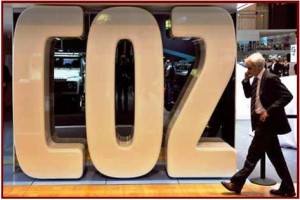 California and Quebec today released the results of the tenth joint cap-and-trade auction of carbon allowances, a key building block in fighting global warming. The final numbers include sales figures and settlement prices for 2014, 2017 and 2020 vintages.
California and Quebec today released the results of the tenth joint cap-and-trade auction of carbon allowances, a key building block in fighting global warming. The final numbers include sales figures and settlement prices for 2014, 2017 and 2020 vintages.
Cap-and-trade program as one of the strategies California will employ to reduce the greenhouse gas (GHG) emissions that cause climate change. This program will help put California on the path to meet its goal of reducing GHG emissions to 1990 levels by the year 2020, and ultimately achieving an 80% reduction from 1990 levels by 2050. Under cap-and-trade, an overall limit on GHG emissions from capped sectors will be established by the cap-and-trade program and facilities subject to the cap will be able to trade permits (allowances) to emit GHGs.
Cap-and-trade is a market based regulation that is designed to reduce greenhouse gases (GHGs) from multiple sources. Cap-and-trade sets a firm limit or cap on GHGs and minimize the compliance costs of achieving AB 32 goals. The cap will decline approximately 3% each year beginning in 2013 when it went into effect.
Trading, of course, creates incentives to reduce GHGs below allowable levels through investments in clean technologies. With a carbon market, a price on carbon is established for GHGs. Market forces spur technological innovation and investments in clean energy. Cap-and-trade is an environmentally effective and economically efficient response to climate change, per supporters.
Latest Cap-and Trade Auctions
2014/2017 Vintage
- Number offered: 65,104,273
- Number sold: 11,673,000
- Settlement Price: $13.57
2020 Vintage
- Number offered: 9,723,500
- Number sold: 701,000
- Settlement Price: $13.57
Proceeds to the jurisdictions are paid after all bidder payments are received and will occur by March 21, 2017. As provided in the California Cap-and-Trade Regulation, so called AB 32. Sellers who consigned allowances in this auction will be paid the auction settlement.


Statement from CARB Chair Mary D. Nichols in response to Court of Appeals upholding decision by lower court regarding the cap-and-trade program:
California Air Resources Board Chair Mary D. Nichols issued the following statement in response to the decision in the Court of Appeal of the State of California, Third Appellate District, upholding the lower court’s decision relating to CARB’s cap-and-trade program:
“The court’s decision affirms the basic purpose and structure of the program–to deliver carbon reductions in a cost-effective and flexible manner. The decision provides additional certainty for this keystone program, which supports all the other approaches California has underway to fight climate change. Together, our climate policies will continue to drive innovation and clean energy, deliver good clean tech jobs, and make it possible to continue to invest in programs, especially in disadvantaged communities, to reduce greenhouse gases and improve the quality of life,” said Nichols.
ARB’s stated mission is to promote and protect public health, welfare, and ecological resources through effective reduction of air pollutants while recognizing and considering effects on the economy. The ARB oversees all air pollution control efforts in California to attain and maintain health based air quality standards.